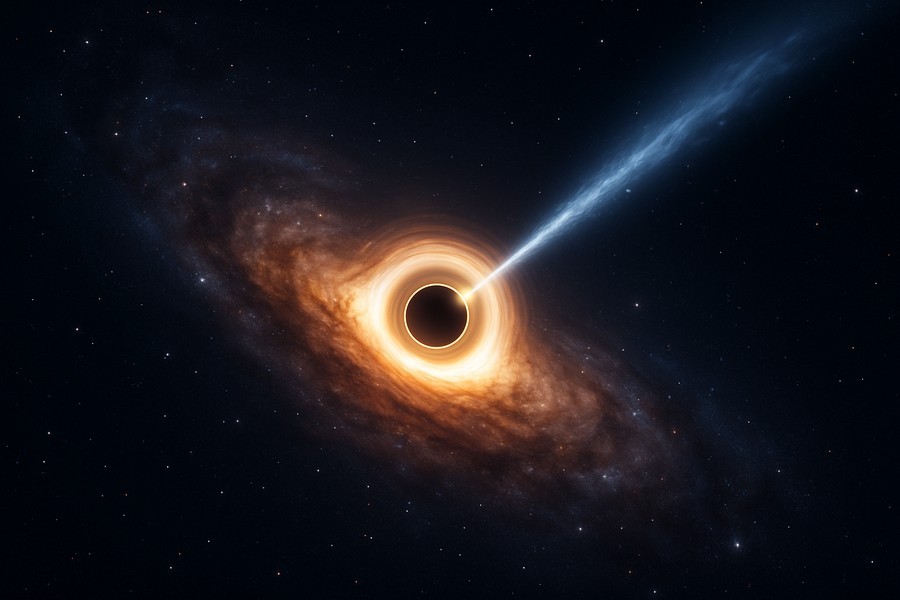
A Surprise in the Cosmos: Unanticipated Changes in the First Ever Captured Black Hole
Groundbreaking images of a supermassive black hole situated at the center of a distant galaxy have been revealed. This black hole, which is situated about 55 million light-years away from us, gained recognition in 2019 when it became the first of its kind to be photographed by human beings.
Magnetic Field Reversal
The photographs display a surprising shift in the black hole's magnetic field polarization that took place over a period of four years. The images offer signs of a jet of matter being discharged from the black hole, with the jet's base connected to the bright outer boundary or "event horizon." These observations are crucial as they could assist scientists in understanding the behavior of matter in the extreme environments surrounding supermassive black holes, which can have the mass of millions or even billions of suns.
One researcher was quoted as saying that the polarization pattern's switch in direction was quite unexpected and challenges current models. He added that there is still much unknown about the area near the event horizon.
Plasma Behaviour
The images show a ring of superheated, highly magnetized gas or plasma, moving around this black hole, then settling before spiraling in the opposite direction. What’s fascinating is that the ring size remained consistent over the years, confirming the black hole's shadow predicted by Einstein’s theory of general relativity. However, the polarization pattern changes significantly, indicating the plasma around the event horizon is dynamic and complex, pushing theoretical models to their limits.
The changing polarization of plasma seems to suggest an evolving and turbulent environment around the black hole, which could be impacting how it consumes surrounding matter. The cause of the reversal isn't clear yet, but it could be due to the plasma's magnetic structure combined with external effects.
Jet Particles and Upgraded Telescopes
The recent images have helped researchers study the base of the jet of particles erupting from around the black hole at near-light speed. Jets like these, which are made up of particles directed to the poles of black holes by magnetic fields, are believed to represent one of the ways supermassive black holes shape the galaxies they inhabit by infusing vast amounts of energy into their surroundings.
The latest images also highlight improvements to the observing technology. The final image collected is sharper thanks to two new telescopes that have been added to the existing network, enhancing the project's sensitivity.
A scientist involved in the project said that these results demonstrate the project's evolution into a scientific observatory, capable of delivering not just unprecedented images, but a progressive and coherent understanding of black hole physics. She added that each new campaign expands our understanding, from the dynamics of plasma and magnetic fields to the role of black holes in cosmic evolution.
Future Developments
Upcoming images from the project are set to improve with upgrades to two telescopes in its network. The project will continue playing a crucial role in our understanding of black hole physics for the foreseeable future, team members said.
One team co-leader said that they work on improving the project year after year, with additional telescopes and upgraded instruments, new scientific exploration ideas, and novel algorithms to extract more from the data. He added that for this study, all these factors combined resulted in new scientific findings and questions that will certainly keep them busy for many more years.
